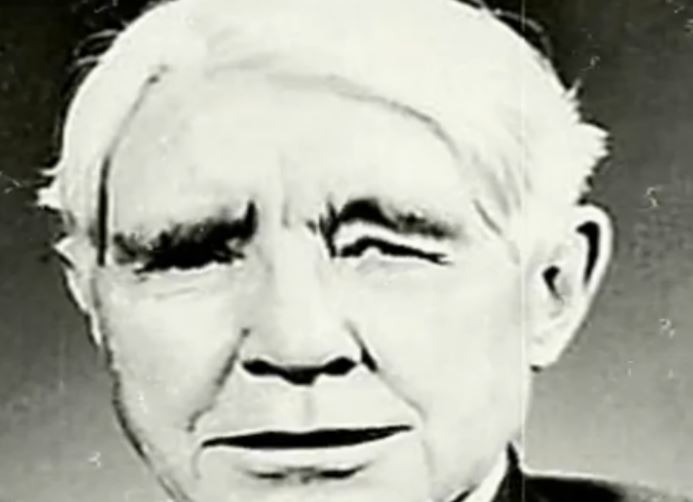[tubepress mode=”tag” tagValue=”Words Samuel Beckett Poetry ” resultsPerPage=”18″ orderBy=”relevance” perPageSort=”viewCount” ]
Poetry videos
Carl Sandburg Poetry Readings
Here we are searching for “Carl Sandburg”. Carl August Sandburg was an American writer and editor best known for poetry. He won three Pulitzer Prizes, two for his poetry and one for his biography of Abraham Lincoln.
The Carl Sandburg Collection at the University of Illinois Library in Urbana-Champaign is the major repository of Sandburg’s papers. Smaller collections of Sandburg papers exist at Connemara, the Carl Sandburg Home National Historic Site, now a national park, in Flat Rock, N.C. Other important Sandburg manuscript collections are housed at the University of Virginia and Knox College in Galesburg, Ill. Other major published works by Sandburg include Abe Lincoln Grows Up (1928); Harvest Poems (1960); Lincoln Collector: The Story of Oliver R. Barrett’s Great Private Collection, with Oliver R. Barrett (1949); Mary Lincoln: Wife and Widow, with Paul Angle (1932); The Sandburg Range (1957); and Steichen the Photographer (1929). Sandburg’s daughters and granddaughter produced helpful editions of his work, as well as memoirs. See Margaret Sandburg, ed., Breathing Tokens (1978), for previously unpublished poems, and The Poet and the Dream Girl: The Love Letters of Lilian Steichen and Carl Sandburg (1987); Helga Sandburg, A Great and Glorious Romance (1978), Sweet Music: A Book of Family Reminiscence and Song, with a preface by Carl Sandburg (1963), and ” . . . Where Love Begins” (1989); and Paula Steichen, My Connemara (1969), and “Hyacinths and Biscuits,” in Carl Sandburg Home Handbook 117 (1982). Two important editions of Sandburg’s letters are Carl Sandburg, Philip Green Wright and the Asgard Press, comp. Joan St. C. Crane (1975), and The Letters of Carl Sandburg, ed. Herbert Mitgang (1968). A comprehensive biography is Penelope Niven, Carl Sandburg: A Biography (1991). Other biographical studies include North Callahan, Carl Sandburg, Lincoln of Our Literature (1970); Richard Crowder, Carl Sandburg (1964); Gregory d’Alessio, Old Troubadour (1987); Karl Detzer, Carl Sandburg: A Study in Personality and Background (1941); Hazel Durnell, The America of Carl Sandburg (1966); and Harry Golden, Carl Sandburg (1961; repr. 1988). For an analysis of Sandburg’s controversial political journalism and poetry, consult Phillip Yanella, The Other Carl Sandburg (1996). Additional unpublished or uncollected Sandburg poems have been gathered in George Hendrick and Willene Hendrick, eds., Carl Sandburg: Billy Sunday and Other Poems (1993) and Carl Sandburg: Selected Poems (1996). For a collection of Sandburg’s film criticism, see Dale and Doug Fetherling, eds., Carl Sandburg at the Movies: A Poet in the Silent Era, 1920-1927 (1985). For Carl Sandburg on Broadway, consult Norman Corwin, The World of Carl Sandburg (1961).
Deleted: Source: http://www.anb.org/articles/16/16-01435.html; American National Biography
Deleted: Sandburg was born in Galesburg, Ill., on Jan. 6, 1878, of a poor Swedish immigrant family. At the age of 13 he quit school to work as a day laborer. He traveled extensively through the West, where he began developing a lifelong devotion to his country and its people. Following Army service during the Spanish-American War, he entered Lombard (now Knox) College in Galesburg. Here he wrote his first poetry.
Astatine in a Fantastic Car Crash
Astatine in a Fantastic Car Crash
by Janet Kuypers
from the “ Periodic Table of Poetry” series
And our life is one big road trip now,
and we set the cruise control
and make our way down the expressway.
And most of the time we’re just moving
in a straight line, and the scenery
blurs. There’s nothing to see.
But I know what’s inside of you
and I know what you’re made of.
There’s no such thing as a calm with you.
You are a fantastic car crash.
You stop traffic in both directions —
In your twisted way, you come from the decay
of others… And what do you leave
in your wake? More radioactive destruction,
as all around you slows down to stare,
and all the gapers gawk, as the decay grows.
Everything shatters with you, you know.
It’s a spectacular explosion,
until your instability corrodes you down
to the basics in the world. And yeah,
what was left of you after you were gone
is so much more stable than what you were,
but still, I’d duck and cover
as metal flies through the air. Every time
you leave the scene of the accident,
I am left picking up the shards of glass
from the windows. You know, the glass breaks
into such tiny little pieces. They look like ice.
It takes so long to pick up the pieces,
and even though I’m careful,
I’m still picking up the pieces
after dealing with only fractional amounts of you.
I’ve only been able to infer what you’re like
by knowing your brethren,
while I’m stuck here, picking up the pieces,
and I’m still on my knees.
The glass cuts into my hands,
because it was only after so much
of your destruction that you left blood
dripping down to the street.
think of this as your contribution,
this radioactive short-term flash of decay…
think of this as your contribution
to this fantastic car crash
that is you, that is me,
that is us.
I’ve tried to learn, I’ve tried to study
these microscopic parts of you
to make sense of you…
But whether or not you ever leave enough,
despite your destruction,
despite this decay of yours,
I have to keep reminding myself
that when it comes to you,
This is what you do.
This happens all the time.
So,
I to pull the glass from my hands
and I wave my hand to the line of traffic:
go ahead, keep driving, this happens
all the time, there’s nothing to see here.

























